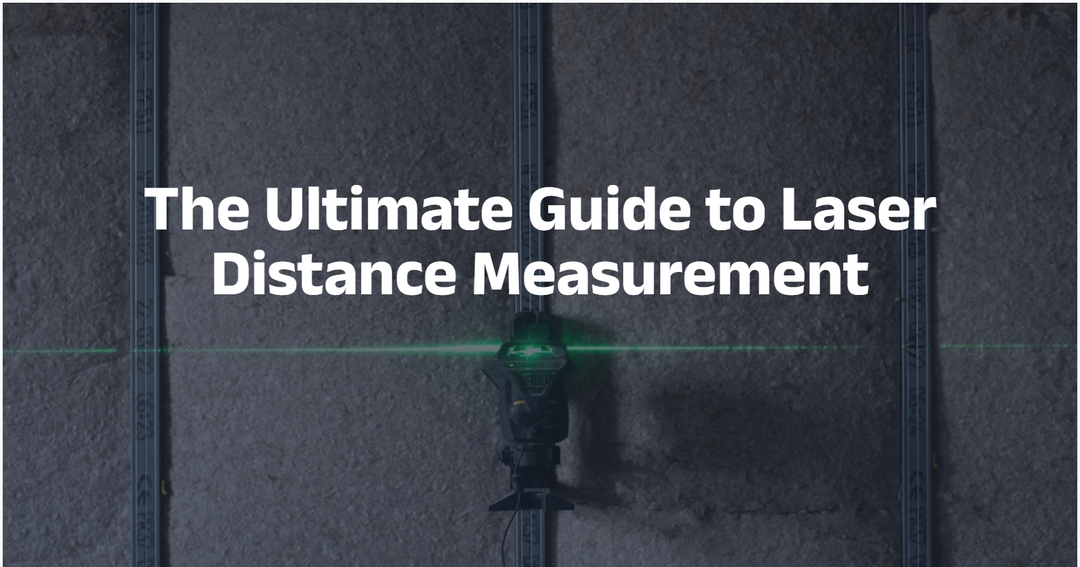How To Find Underground Water / Gas Supply Pipelines Quickly
The last thing you want when doing construction or digging in your garden is to strike an underground water/gas supply pipeline. This can lead to severe problems, including significant property damage, injury, and even death. Thankfully, with the easy tips in this article, you can quickly and efficiently locate underground water and gas supply pipelines using the Noyafa prospecting apparatus (Save $6 with coupon code 6D4SUBER), preventing any dangerous accidents during digging. Let me show you how.
Ground Penetrating Radar

If you're looking for a quick and easy way to find underground water or gas pipelines, then ground penetrating radar is the way to go. This technology uses electromagnetic waves to penetrate the ground and detect objects hidden beneath the surface.
It operates by sending a series of waves into the earth that is reflected back in different intensities depending on what's underground. The data can be used to create an image of what's underneath without digging up all the dirt first.
To use this technique, start by finding an area where people are likely to install pipes in your neighborhood (for example near homes). Then choose two points - one where you want your pipeline to end and another one where it starts - and place three vertical poles at each point.
Connect two probes at each pole with high-strength line wire with antennas that reach 1m above ground level and 3m below it. Run a current between the probes until they touch each other. Ground Penetrating Radar cannot penetrate any object larger than half its wavelength.
So if you find areas where the signal strength is reduced, there may be something obstructing the signal such as concrete walls or natural barriers like hillsides or trees. Make sure to run tests before conducting actual tests as GPRs aren't foolproof and can miss buried objects if not configured properly.
Electromagnetic Utility Locating

This is a fast and easy way to find underground water and gas pipelines. All you need is a standard electrical outlet and a metal rod. Simply insert the rod into the ground and hold it near the electrical outlet.
The current will flow through the pipeline and be detected by the metal rod. You can also put your hand on the rod for more information about what type of pipe it is (underground water, gas, or sewer).
With this method, you are not drilling holes in the ground and do not have to wait for someone else to come out and find these pipes. Another benefit of this technique is that you don't have to use heavy equipment.
Electromagnetic Utility Locating has been used successfully by municipalities, state transportation departments, utility companies, land developers, and construction contractors. It's one of the most cost-effective ways to identify where pipes are located underground without having to dig up pavement or risk damaging landscaping.
If you're building a house, new street, new mall, or any other structure with lots of foot traffic above an old utility line; this is a valuable resource for making sure that people aren't going down streets where they could get hurt.
If you're doing any kind of excavation work in an area where there might be buried lines below; electromagnetic locating offers peace of mind knowing exactly where those lines are before excavating.
Dowsing

Start by walking back and forth until you feel the stick or rod pull in one direction. When this happens, stop and start moving the tool up and down until you feel it pulling downwards. This indicates that there is a pipeline underground. You can then use a map to locate the pipeline and mark its location.
If you have your GPS coordinates handy, enter them into Google Maps (or any other mapping software) to find out exactly where the line runs and how close it may be to your home. For some people this type of information is not worth the bother; but for others who live in an area with high levels of natural gas leakage, knowing about these pipelines before building their home could save them from disaster.
Plus, if they know someone has marked the location of existing lines on their property they will know not to build too close. All homeowners should be aware of the possible dangers of digging near pipes as well as all utility poles and cables because they often run parallel to each other, but many individuals don't take the time to get educated on the matter.
Noyafa NF-826 Advanced Underground Cable / Wire / Pipeline Locator: The Easiest Method
If you're looking for an easy way to find underground water or gas pipelines, the Noyafa NF-826 Advanced Underground Cable / Wire / Pipeline Locator is the best method. This device is simple to use and can quickly locate any buried pipeline. You just place it on the ground and wait for a few seconds until you see a signal on the screen.
The only downside of this product is that it has a limited range of 0.1m - 2m meters and it's waterproof, so you can use it in wet areas. It also doesn't work if there are too many obstacles such as trees, buildings, and other things around.
However, with its portability, it's one of the most effective ways to find underground pipes without digging up huge chunks of the earth - which would be very expensive. For those who don't want to spend a lot of money on professional equipment, but still want reliable results, this is a great choice.
The transmitter sends out pulses into the ground, where they bounce off anything solid and come back to the receiver. The software calculates how long it took for these pulses to return, and how far they traveled from the transmitter, and displays them on a map of your area.
Just set your markers at two points about 10 feet apart and walk between them holding the receiver in front of you until you get a signal (which will be indicated by a sound).
Once you've found what you were looking for (a pipe), mark that spot with some tape or chalk so that when you come back again later to do more searches, it'll make finding your original location much easier.
There are four different modes available on the Noyafa NF-826: Search Mode - in which you manually sweep across a general area trying to pick up anything metallic; Phase Mode - which emits four separate waves simultaneously for increased accuracy; Echo Mode - detects higher frequencies than Search Mode; and Touch Mode - detects metal objects as close as 1 cm.





